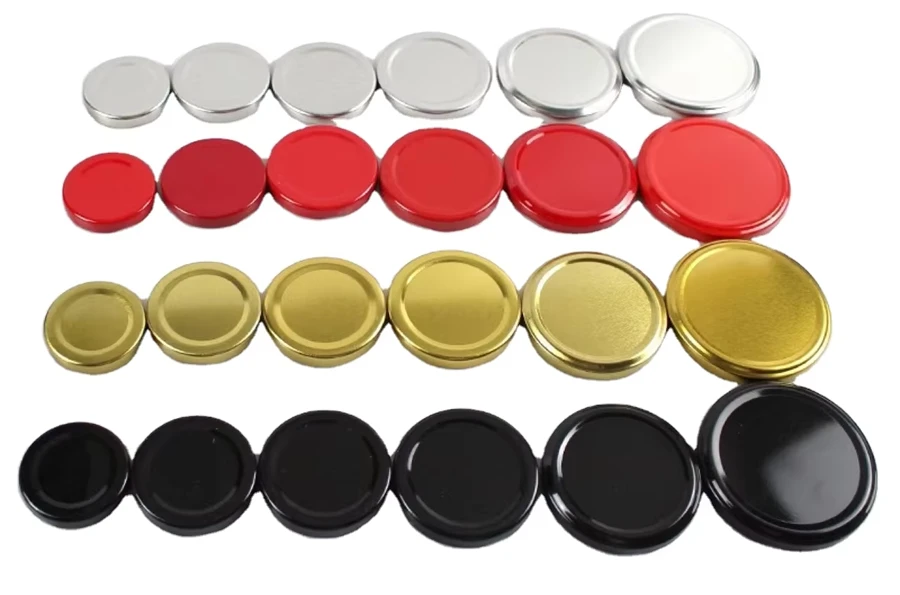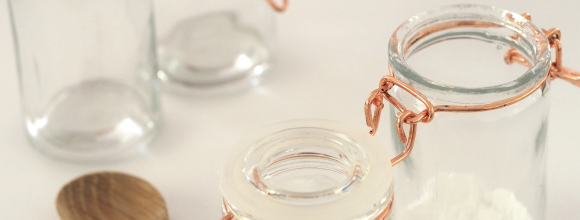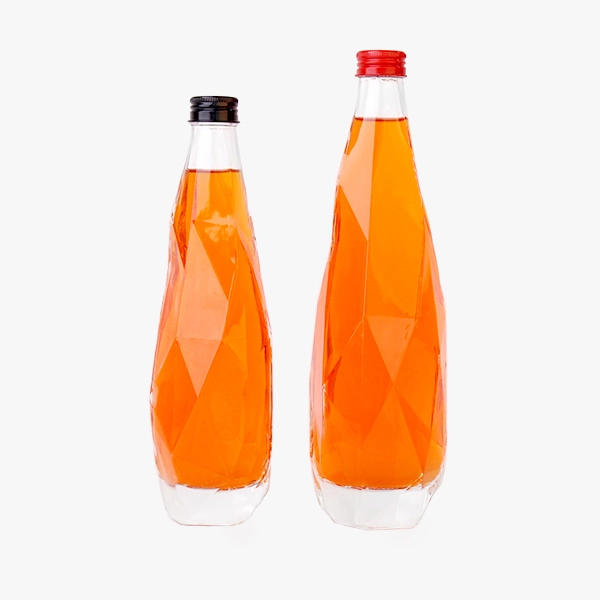How to Measure Jars and Lids for a Perfect Fit
Measuring jars and lids can save you time, money, and frustration. When you measure jars and lids correctly, you prevent leaks, ensure freshness, and keep products safe. This is important for home cooks, hobbyists, and businesses that want secure and professional packaging.
It also helps you avoid wasted materials and damaged goods. Having a perfect fit leads to better results, whether you are storing homemade jam or designing custom product packaging.
Yanjia Packaging is known for offering reliable jar and lid solutions. They focus on helping people find the right sizes for their needs. In this guide, we will show you step by step how to measure jars and lids with ease.

Why Measuring Jars and Lids Is Important
Accurately measuring jars and lids is essential for many projects. While it may seem straightforward, even a slight mistake can lead to significant issues. A poorly fitting lid can result in food spoilage or liquid leaks, leading to waste, frustration, and added expenses. Let’s delve into why precise measurements matter:
- Ensuring Airtight Seals for Preservation
Many people use jars for canning and preserving food. Airtight seals keep out oxygen and bacteria. If you do not measure jars and lids correctly, your jar might not close tightly. Then, the food inside can spoil faster. An airtight seal also helps maintain flavor, color, and nutrients. - Avoiding Product Leakage or Spoilage
When using jars to store liquids like sauces or syrups, leaks can create a mess and damage labels or packaging materials. A properly fitted lid ensures your items stay secure, which is especially critical for businesses shipping products. Even minor leaks can negatively impact customer satisfaction. - Improving Compatibility for Branding and Packaging
If you sell products in jars, correct sizing helps your brand stand out. Having a jar and lid that fit together seamlessly can create a polished look. This makes your product more appealing on store shelves or online listings. Also, matching the right jar size with the correct lid finish lets you add decorative elements. This can include labels, ribbons, or tamper-evident seals.

What You’ll Need to Measure Jars and Lids
Gathering the correct tools and knowing which measurements to take will set you up for success. Here are the basics you need:
- Measuring Tape, Ruler, or Calipers
These tools are essential for determining diameter, height, and other key dimensions. A measuring tape is ideal for curved surfaces due to its flexibility. A ruler offers a quick and simple way to measure smaller jars and lids. For added precision, calipers are a great option, providing highly accurate measurements. - Common Measurements Needed
- Diameter: This is the distance across the widest part of the jar opening or lid.
- Height: To determine the height of the jar, measure from its base to the top.
- Thread Size (Finish): This might look like numbers such as 70/400 or 58/400. These figures show the thread diameter and style of the lid. They let you know how the lid twists onto the jar.
- A Clean, Flat Surface
It helps to have a stable table or counter when you measure jars and lids. This reduces the chance of mistakes. Make sure your surface is well-lit so you can read the measurements clearly. - Pen and Paper
Make sure to note down your measurements so you don’t forget them. This is especially crucial when you require multiple jars with matching lids.
Step-by-Step Guide to Measure Jars
Measuring jars can be simple if you follow the right steps. Pay attention to each detail so that your lid will fit perfectly. Here is a clear, three-step process:
Step 1: Measure the Diameter of the Jar Opening
- Place the jar on a stable, flat surface.
- Use a measuring tape or ruler to measure straight across the center of the jar’s opening.
- Write down the measurement you obtain—this is the jar’s opening diameter.
Ensure you measure the inner edge of the rim, not the outer lip. The diameter is usually the most important number for matching a lid. If your measurement is between two numbers, choose the one that is a bit larger. This helps ensure the lid can fit over the rim.
Step 2: Measure the Height of the Jar
- Set the jar upright.
- Position your measuring tool at the jar’s base.
- Measure from the base to the top edge or lip.
Be sure to note if there is any raised portion around the rim. Sometimes jars have a slight bulge near the top. In that case, measure from the flattest area of the base to the highest point of the jar’s lip. You will want the total height, including any small ridges, because lids can sit differently on jars with raised rims.
Step 3: Check the Thread Size or Finish
Jar thread sizes can seem confusing, but they are actually quite straightforward. You might see numbers like 70/400 or 58/400. The first number refers to the diameter in millimeters, and the second number shows the thread style or “finish.” Here is how to figure it out:
- Identify the thread pattern on the jar’s neck.
- Match the thread pattern to standard sizes by looking at a reference chart.
- Confirm the exact finish, such as 400 or 410.
This helps you pick a lid that twists on correctly. If you are not sure which finish you have, compare your thread style to a known sizing guide. The jar’s label or box might also list the thread style.
Step-by-Step Guide to Measure Lids
Lids come in many shapes, types, and styles. Getting a tight seal depends on more than just the diameter. Follow these three steps to measure jars and lids together for the best fit:
Step 1: Measure the Lid Diameter
- Lay the lid flat on a table.
- Use your measuring tape or ruler to measure across the center.
- Write down the result.
Check if the lid has ridges on the inside. If it does, measure across the areas that will make contact with the jar. This ensures you are matching the part of the lid that grips the jar. A close match is key for preventing leaks.
Step 2: Check for Compatibility with Jar Threads
- Look at the inside rim of the lid.
- Notice any grooves or thread patterns.
- Compare these with the jar’s threads.
The threads on the lid and jar must align correctly; otherwise, the lid will not screw on properly. Certain lids are specifically designed to accommodate a variety of finishes. Others require a specific jar neck. Keep the thread finish in mind. This is where the measurements like 70/400 or 58/400 matter most. If the numbers match, the lid is likely compatible.
Step 3: Evaluate Lid Depth and Seal Type
Beyond diameter and thread patterns, depth is also crucial. Some lids have deeper profiles, which can affect how they sit on the jar. If you store thick substances or want extra space for sealing, consider a lid with more depth. Also, check the seal type:
- Foam Liners: Often used for dry goods.
- Plastisol Liners: Common in canning and hot-fill products.
- Pressure-Sensitive Liners: Used for tamper-evident seals.
Match your liner type to the contents. For example, if you are storing jams, a plastisol liner can help create a strong seal. This step helps you get the best performance from your jar and lid.
Common Challenges When Measuring Jars and Lids
Even if you follow the steps carefully, you might run into a few problems when you measure jars and lids. Here are some common challenges and their solutions:
- Misinterpreting Thread Measurements
Thread sizes can look confusing at first. Some people mix up the first number (diameter in millimeters) and the second number (thread style). If in doubt, check a reliable reference chart or a standard sizing guide online. - Measuring Irregularly Shaped Jars
Some jars are not perfectly round. They may have unique shapes or ridges. In these cases, measure across the widest part of the opening. Take multiple measurements and pick the most consistent reading. - Getting the Wrong Lid Finish
If the lid style does not match the jar finish, they will not work together. Look for lids labeled with the same finish number. This could be 400, 410, or another standard code.
Solutions for Avoiding These Mistakes
- Use calipers for more precise readings.
- Double-check each measurement and write it down.
- Compare your numbers to a trusted size chart.
- Test one lid before buying many.
These tips will help you avoid waste and guesswork when measuring jars and lids.
Tips for Ensuring a Perfect Fit
Accuracy and attention to detail can help you avoid issues later. Here are some quick tips to ensure a snug match when you measure jars and lids:
- Test Multiple Lids with the Jar
Sometimes, small variations in manufacturing can affect how a lid fits. Try a few lids if you can. This helps you find the best seal for your jar. - Consider Material Differences
Metal lids can handle higher temperatures, which is useful for canning. Plastic lids might be lighter and cost less. Each material can change how tight the lid feels. Always confirm the lid is designed for your jar’s intended use. - Match Lid Finishes with Jar Designs
Some jars have special finishes or decorative rings. Make sure your lid complements these features. This helps create a seamless look. It also ensures the threads align correctly. - Follow Manufacturer Guidelines
If you bought a set of jars, the brand might list the exact lid type. Use that information to be sure you are picking a compatible lid.
Yanjia Packaging: Your Partner in Jar and Lid Solutions
When businesses need accurate and customizable jar and lid solutions, having a trusted partner helps. Yanjia Packaging stands out because they understand the importance of reliable fittings and airtight seals. They offer a wide range of sizes, materials, and finishes to suit different products. Whether you need small sample jars or large containers, they can guide you toward the best match.
They also know how crucial branding is. If you want a jar that represents your company’s look and feel, they can help you pick the right shape and color. They have experience with thread finishes, liner options, and closure types. This means you do not have to guess which lid will work.
Working with Yanjia Packaging can save you time. They help you avoid the trial-and-error process that often comes with finding the right jars and lids. Their expert team is ready to answer questions and provide friendly support. They offer guidance that feels personal, so you can make the best choices for your products. If you run a small business or a large company, they can tailor their packaging solutions to fit your exact needs.
Their approach is not just about selling lids and jars. It is about ensuring you have the perfect fit so your items stay fresh, secure, and appealing. By measuring jars and lids with precision, they help businesses keep their reputations strong and their customers happy.
Conclusion
Accurate measurements make all the difference when you want a tight seal and professional look. To measure jars and lids, start by checking the jar’s opening diameter, height, and thread finish. Then, measure the lid diameter, examine the thread compatibility, and look into lid depth. Keeping these details in mind can help you avoid leaks, product waste, or spoiled goods. If you want to simplify the process, remember that you can also test multiple lids and match finishes carefully.
A proper fit is key, whether you are preserving food, packaging products for sale, or simply organizing your pantry. If you are unsure or need expert help, explore Yanjia Packaging for guidance and flexible solutions. They can help you find customizable jar and lid options that meet your specific needs. With the right measurements in place, you can feel confident that your items are secure and ready to shine.
















